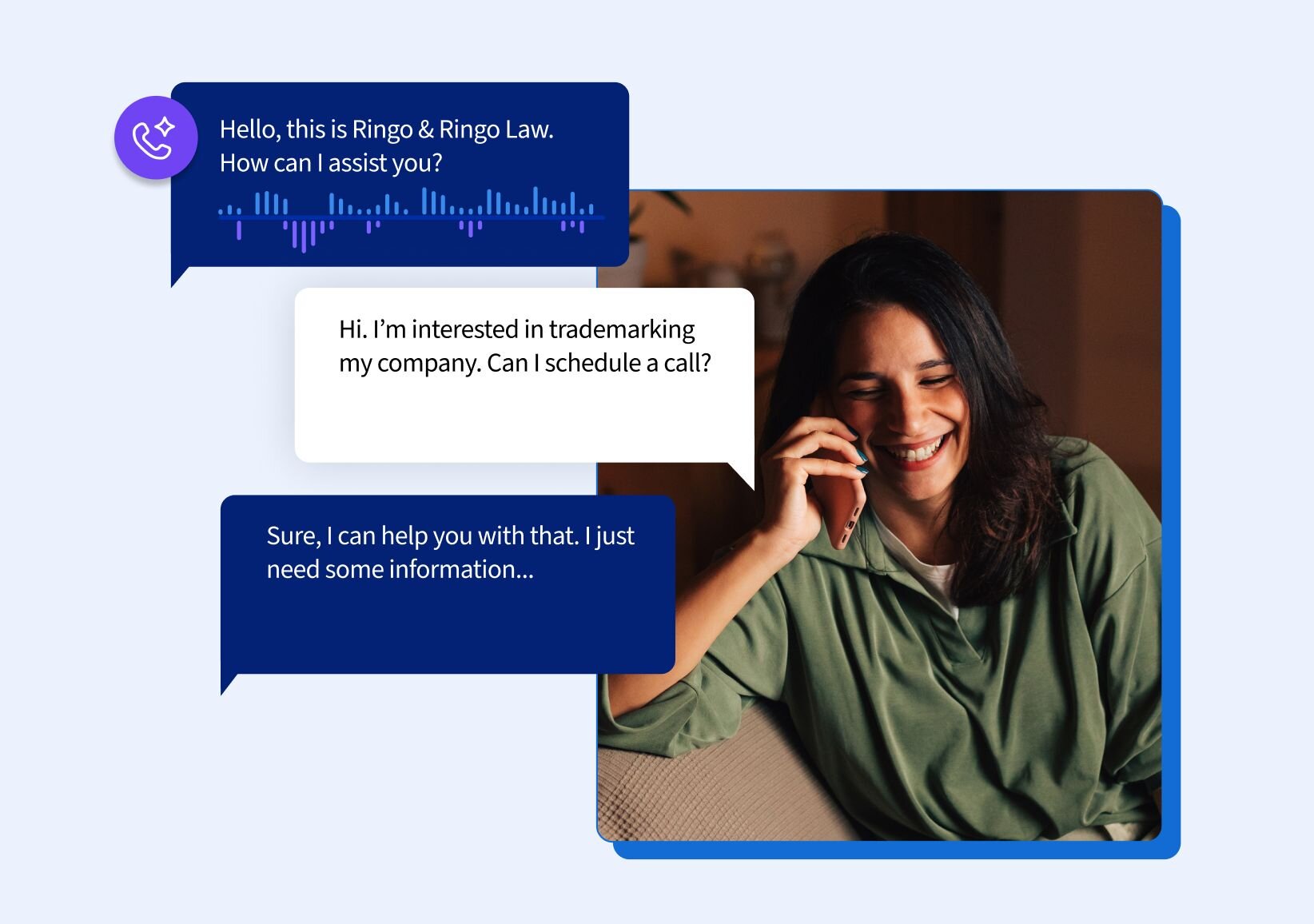One day you were texting with customers – the next, your messages were no longer getting through. Wondering what's going on?
As the popularity of business-to-customer texting has grown, the industry has innovated sending methods for efficiency and raised the bar for security and consent to ensure customers aren't getting spam or unwanted text messages. This has made it essential for businesses who want to maintain high deliverability rates to comply with regulatory guidelines, earn greater trust from carriers, and ensure they have customer consent to text.
In addition, as more businesses text their customers, the industry has shifted to the use of Application-to-Person (A2P) messaging through the use of 10 Digit-Long Codes (10DLC) for all SMS and MMS messages from businesses to individuals. The use of A2P 10DLC provides better delivery quality and lower filtering risk than long code SMS sending of the past using the same preferred local phone numbers.
CallRail offers businesses these local 10-digit numbers for calling and texting, rather than toll-free 1-800 type numbers because they provide a more personal feeling to leads and customers as these are the familiar types of numbers used for sending and receiving text messages from friends and family.
Below we'll break down exactly how to ensure compliance with new industry requirements, build trust with your customers, and collect more customer opt-ins.
How to ensure your text messages get delivered to customers
To make sure your messages reach customers reliably, it's crucial to follow a few key practices:
Register and verify all phone numbers through the appropriate channels
To register and verify 10DLC numbers, you'll need to go through a trusted telecommunications or messaging service provider that has established connections with the appropriate regulatory bodies.
For CallRail customers specifically, it's important to complete the Outbound Text Message Business Registration form to initiate registration with Twilio and The Campaign Registry. This will allow your business to be added to the list of approved, verified businesses that mobile carriers refer to when filtering out spam or unwanted messages. Accurate information about your business and how you intend to use text messaging is vital to ensuring 10DLC numbers are properly registered and verified.
Maintain a healthy sender reputation
Your sender score reflects the trustworthiness of your messaging practices. By consistently delivering high-quality, relevant content to engaged users and avoiding spam-like behavior, such as sending excessive promotional content, you can bolster this score. It's also important to promptly honor any opt-out requests. Failing to do so can lead to increased complaints and harm your sender reputation. CallRail helps protect you and your customers from unsolicited text messages by requiring the use of at least one approved keyword, such as “STOP,” or “UNSUBSCRIBE” to allow customers to opt-out to your text messaging campaigns.
Implement robust opt-in mechanisms
Perhaps the most important strategy of all is to always seek explicit consent from your customers before sending them messages. Clear and user-friendly opt-in and opt-out options ensure compliance with regulations and foster trust between your business, customers, and carriers. In the next section, we'll show you exactly how to do this.
7 tips to increase customer opt-ins for text messaging
1. Make it easy for your website visitors to opt-in
Provide a call-to-action (CTA) on your website where visitors can voluntarily provide you with their phone number and opt-in to receive text messages. These often work best when there's an incentive tied to opting in. For example, a landscaping business might include a CTA with language like:
Get a 25% discount on winterizing your sprinkler system when you sign up for text messages.
Additionally, make sure you add an easy-to-see opt-in checkbox or a clear statement about receiving text messages when website visitors provide their phone number on any of your web sign-up forms.
2. Capitalize on customers texting you
When a customer sends your business a text, it's a great opportunity to get their consent by replying to them with some standard opt-in language. Here is an example:
Hi there! Thanks for contacting Pete's Pest Control. Please reply YES to consent to sending and receiving text messages with us.
3. Use in-store sign-up sheets
For brick-and-mortar businesses, you can have physical sign-up sheets where customers can write down their phone numbers and give consent to receive messages. Ensure that the purpose and benefits of signing up are clearly stated. Just like on your website, offering an incentive, such as a discount or a free product or service, can significantly help boost the number of sign-ups.
4. Checkout process
Whether customers are making an appointment or signing a contract, you can ask them to opt-in to text messages. If they're signing a contract, you can include the opt-in language in the contract; just be sure you're being transparent, and the opt-in is easy to see. You may consider having them initial that portion of the contract or check a box.
If a customer calls in to make an appointment, your staff can ask verbally, but you need to record this consent status. You may also do what's known as a double opt-in, by following up to confirm consent via text.
Sparkling Carpet Cleaners would like to text you regarding any promotions or special services. Please respond YES to receive our texts.
5. Email opt-in requests
If you're already engaging with your customers via email, it's a fantastic opportunity to introduce them to your SMS updates. Send out a friendly email asking if they'd like to enhance their experience by receiving text messages. Keep it straightforward and appealing, and include a compelling CTA like this one for a real estate brokerage:
Want to be the first to know about new listings in your neighborhood? Opt in for SMS updates now.
Don't forget to provide a clear link or simple instructions for opting in, such as, "Click here to start receiving our exciting text alerts!"
6. Promote value
Show your customers what's in it for them. Highlight the perks of opting in, such as gaining access to special discounts, staying in the loop with important updates, or enjoying personalized content. For example, if you're a home services business, you might offer your customers the opportunity to stay updated on seasonal home maintenance tips. You could phrase it like:
Get personalized maintenance tips right to your phone – it's like having a trusted contractor in your pocket!
7. Make sure to follow any industry-specific regulations
For medical and dental practices, complying with HIPAA regulations is mandatory. Here's an example of a HIPAA-compliant opt-in message:
Piedmont Medical Clinic complies with HIPAA and wants to exchange text messages with you. Text messaging may not be entirely secure. To consent, reply YES.
Get your text messaging back on track
To see greater success with your text messaging strategy, get your CallRail numbers registered and make sure you’re asking your customers to opt-in.











